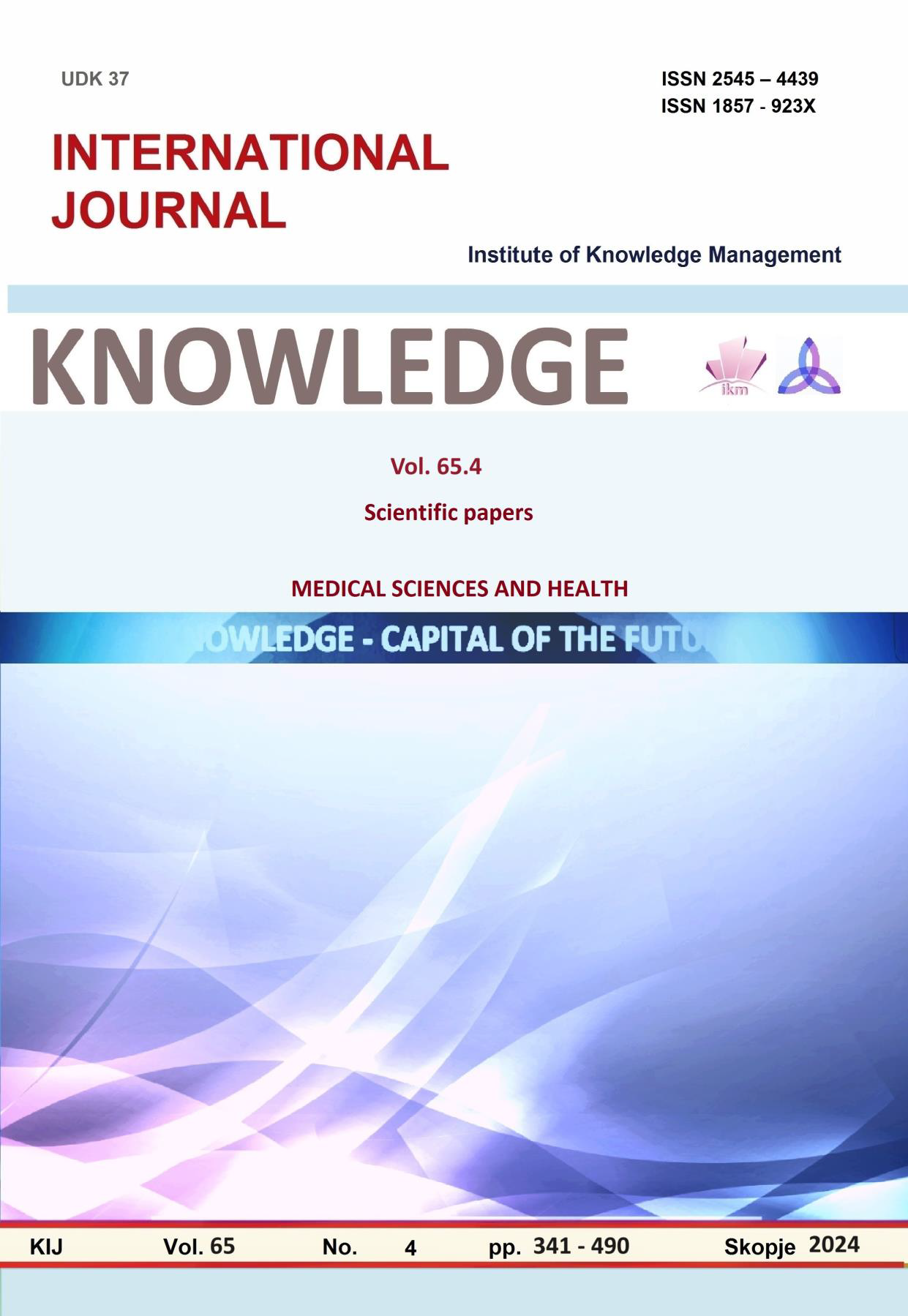TREATMENT OF METHADONE PATIENTS WITH NEUROLEPTIC THERAPY AND HYPERPORLACTINEMIA
Keywords:
methadone treatment patients, risperidone, hyperprolactinemiaAbstract
According to certain findings, heroin addiction represents a significant medical as well as social problem. It is known that with opioid substitution treatment this disease can be overcome or alleviated. However, the application of this treatment does not always give the expected results, so it is necessary to apply additional neuroleptic therapy until the patients are fully stabilized. But the joint application of substitution and neuroleptic therapy can lead to a series of side effects, one of which is the appearance of hyperpolactinemia.
The aim of this study is to observe the prevalence of symptoms of hyperprolactinemia in patients with poor response to methadone treatment, treated with neuroleptic therapy.
Material and methods: The cross-sectional study evaluated 20 male patients with a mean age of ±24.13 years treated at the Skopje Psychiatric Hospital with high doses of Sol methadone 80-120 mg/day. All patients had a bad agreement on the methadone treatment, so additional therapy was included, tab. Risperidone with an average dose of 2 mg/day. Participants signed an informed consent to participate.
Patients were assessed using a semi-structured questionnaire specifically designed for the study. Data consisted of age, sex, and symptoms of hyperprolactinemia: amenorrhea, loss of libido, erectile dysfunction, and gynecomastia. The results of this study were analyzed using descriptive methods, t-test and Pearson's correlation coefficient. The p value of statistical significance was set at p<0.05.
Results: The results obtained in our study showed that a certain percentage of methadone patients who were on Risperidone therapy had symptoms of hyperprolactinemia, but the results were without statistical significance p>0.05.
Conclusion: although in our study we obtained a small percentage of patients with symptoms of hyperprolactinemia, care must be taken in patients on methadone treatment who are also treated with neuroleptic therapy due to their synergistic effect, we should always keep in mind the possibility of developing hyperprolactinemia.
References
Asa SL, Mete O, Perry A, & Osamura RY. (2022). Overview of the 2022 WHO Classification of Pituitary Tumors. Endocr Pathol. 2022 Mar 1;33 (1):6–26. [PubMed]
Ammari R, & Broberger C. (2020). Pre- and post-synaptic modulation by GABAB receptors of rat neuroendocrine dopamine neurones. Journal of Neuroendocrinology. 2020;32 (11):e12881. [PubMed]
Alchabi MS, Bass AN, & Alsalman I. (2023). Physiology, Prolactin. In: StatPearls [Internet]. Treasure Island (FL): StatPearls Publishing; 2023 [cited 2023 Aug 6]. Available from: http://www.ncbi.nlm.nih.gov/books/NBK507829/
Amato D, Kruyer A, Samaha AN, & Heinz A. (2019). Hypofunctional Dopamine Uptake and Antipsychotic Treatment-Resistant Schizophrenia. Front Psychiatry. 2019 May 28;10:314. [PMC free article] [PubMed]
Chokhawala K, & Stevens L. (2023). Antipsychotic Medications. In: StatPearls [Internet]. Treasure Island (FL): StatPearls Publishing; 2023 [cited 2023 Jun 7]. Available from: http://www.ncbi.nlm.nih.gov/books/NBK519503/
Kavarthapu R, & Dufau ML. (2022). Prolactin receptor gene transcriptional control, regulatory modalities relevant to breast cancer resistance and invasiveness. Frontiers in Endocrinology [Internet]. 2022 [cited 2023 Jul 14];13.
Koch MT, Carlson HE, Kazimi MM, & Correll CU. (2023). Antipsychotic-Related Prolactin Levels and Sexual Dysfunction in Mentally Ill Youth: A 3-Month Cohort Study. Journal of the American Academy of Child & Adolescent Psychiatry. 2023 Sep 1;62 (9):1021–50
Osmanova DZ, Freidin MB, Fedorenko OY, Pozhidaev IV, Boiko AS, Vyalova NM, et al. (2019). A pharmacogenetic study of patients with schizophrenia from West Siberia gets insight into dopaminergic mechanisms of antipsychotic-induced hyperprolactinemia. BMC Med Genet. 2019 Apr 9;20 (Suppl 1):47.
Özkan HM. (2020). [Duloxetine Associated Galactorrhea and Hyperprolactinemia: A Case Report]. Turk Psikiyatri Derg. 2020;31 (4):294–6. Thapa S, & Bhusal K. (2023). Hyperprolactinemia. In: StatPearls [Internet]. Treasure Island (FL): StatPearls Publishing; 2023 [cited 2023 Jun 19]. Available from: http://www.ncbi.nlm.nih.gov/books/NBK537331/





